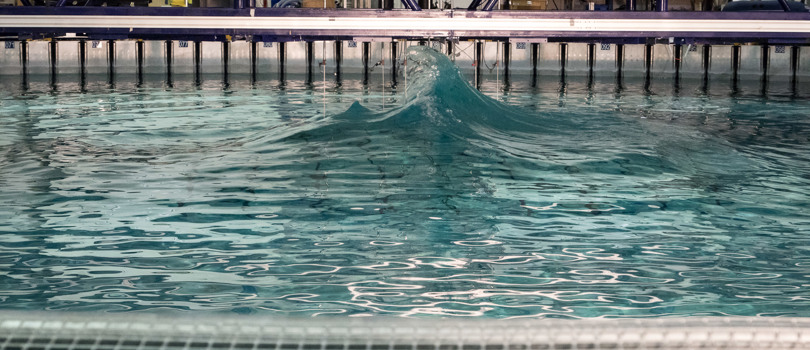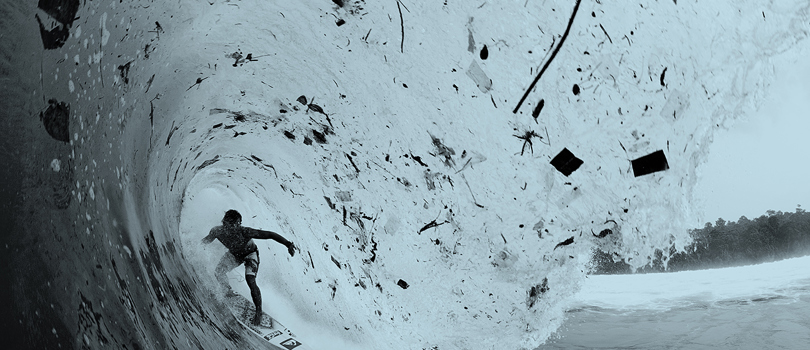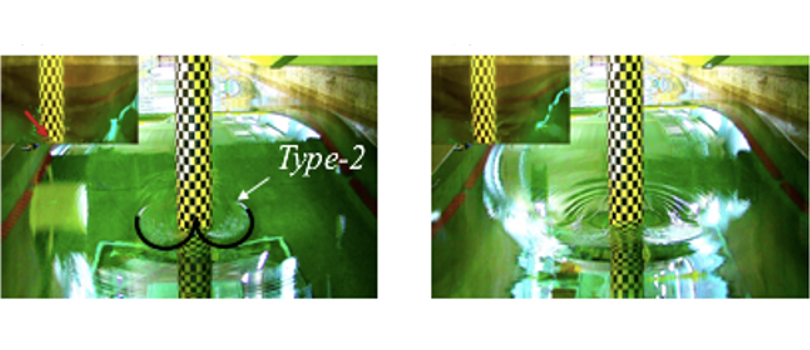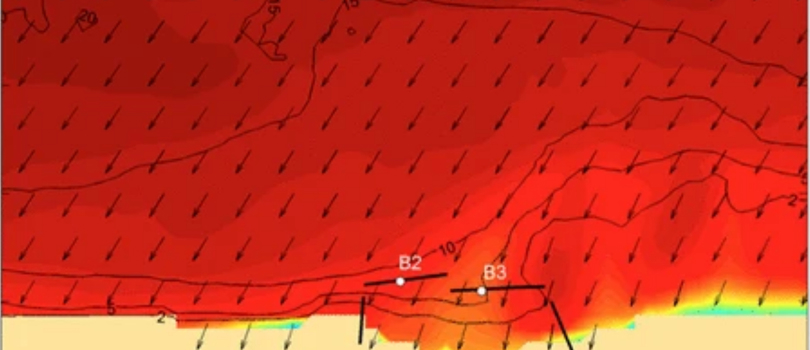Environmental Fluid Mechanics Group Research, Ocean Waves

Ocean Waves

Rogue Waves
Rogue waves are wind driven waves which are much larger than those which surround them. They can do destructive damage to offshore infrastructure such as ships. In particular we are interested in waves which do not fit the standard models of physics and statistics. We carry out numerical, experimental and analytical work. For our numerical work we use OceanWave3D and in-house solvers based on the non-linear Schrödinger equation. Recent experimental campaigns have been carried out in FloWave and the 300 m towing tank in Shanghai. A highlight of this work is our recreation of the famous Draupner wave which received extensive mainstream media coverage.

Plastic Transport in the Ocean
Plastic (and other pollutants) move around the ocean due to a combination of ocean currents, wind and waves. Our research focuses on quantifying the last of these. The way in which waves transport plastic is non-linear and this work involves understanding this physics and using this knowledge to improve our understanding of how plastic moves around the Earth's oceans.
Academics

Wave/Structure Interaction
In many locations around the world waves are a dominant environmental load and therefore a critical design driver in the design of offshore infrastructure.
A particular focus of this research at present is looking at offshore wind turbines. We use numerical, analytical and experimental methods to reduce uncertainty and ultimately drive down the cost of energy. Recent experimental campaigns have taken place in the Kelvin Tank at the University of Strathclyde. Our focus is on fundamental understanding and developing simplified models which can be used to produce long loading time series suitable for fatigue analysis. We are working to integrate our work into structural and geotechical models in collaboration with Prof Ross McAdam.

Wave Climate
The "sea-state" is usually summarised as directional spectrum showing the frequency and direction of the energy. Understanding and modelling this is important for practical metocean engineering calculations of extremes and operational loading. We are interested in the "source terms" used to model sea-states (i.e. non-linear wave-wave interactions, energy input from wind and energy dissipation). We are also interested in whether climate change is impacting sea-states and the size of the waves.


